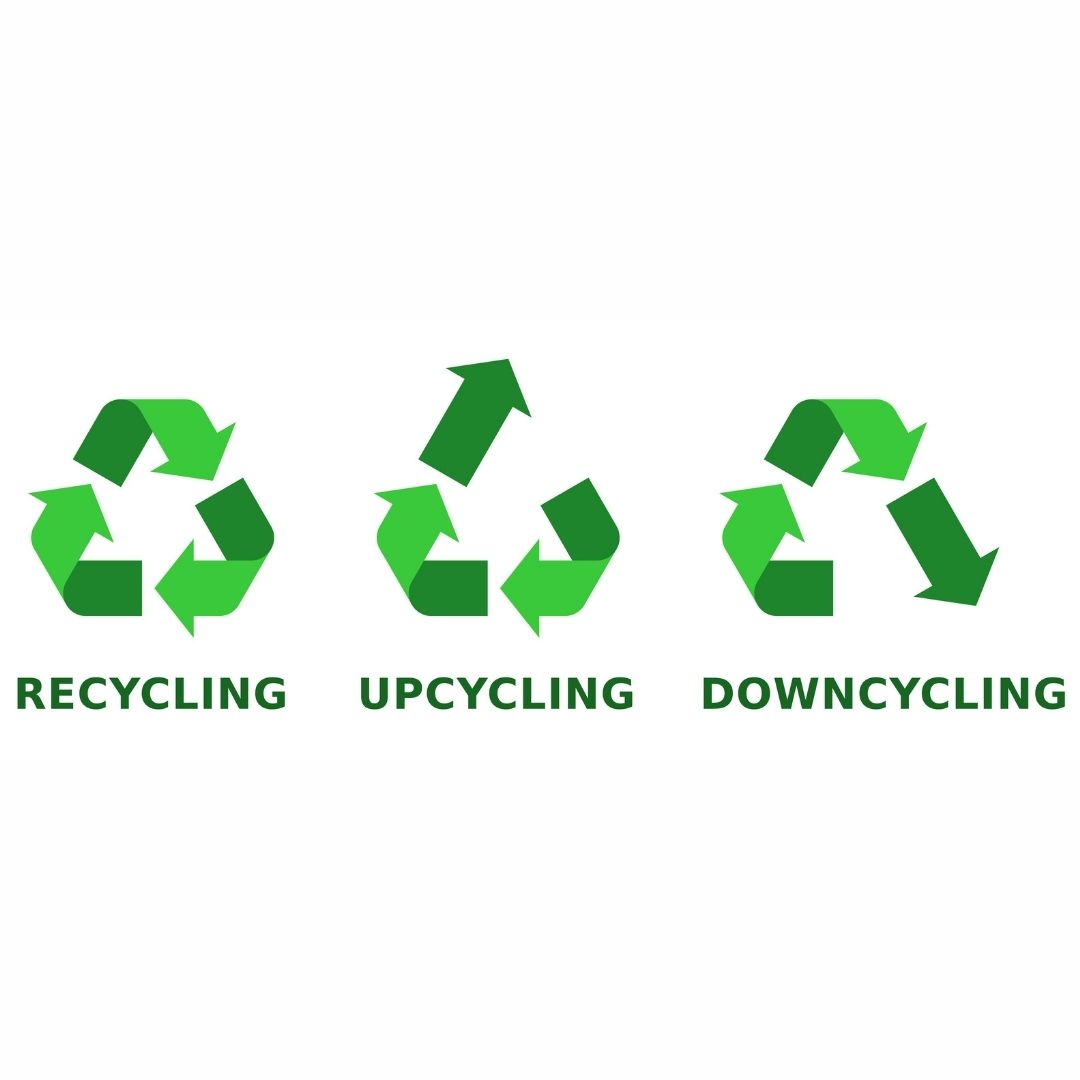We all know what recycling is and why it’s so important. But did you know that products and materials destined for recycling can actually be upcycled or downcycled? There are a few key differences between available recycling methods – and these differences will play a major role in the future of healthcare plastics recycling.
Upcycling and Downcycling: What’s the Difference?
Downcycling
When a material is downcycled, it is recycled into something of less value than it was originally. Downcycling is a process that typically takes single-use products and turns them into durable goods such as plastic lumber, or park benches. This process has positive impacts as it diverts these materials from the landfill and reduces reliance on virgin raw materials but does not necessarily drive the circular economy. Oftentimes paper and plastic products are downcycled.
Upcycling
When a material is upcycled, it is converted into something of equal or greater value than it was originally. The goal of upcycling is to retain or even improve the value of the waste materials being reused. This process consumes waste rather than natural resources as a feedstock which can result in less energy use, air pollution, water pollution, and even less greenhouse gas emissions. Aluminum recycling is one of the best-known examples of upcycling in action.
HPRC & Advanced Recycling
Advanced recycling refers to technologies that convert materials into their original building blocks which can then be used to make valuable products. Many advanced recycling technologies fall into the upcycling category: they convert recycled materials into new products of equal or greater value. In addition, advanced recycling can turn waste that can’t be upcycled into fuels or energy that replace the use of fossil fuels.
So how does advanced recycling fit into existing recycling infrastructure? What does this mean for healthcare plastics?
Advanced recycling can have a major impact on the waste stream of the healthcare industry. Because plastics play such a crucial role in the delivery of safe and cost-effective healthcare services, their use is widespread across the healthcare industry. Until recently, most healthcare plastics could not be effectively recycled, meaning most plastics were incinerated or sent to landfills. This practice of making healthcare plastics from nonrecycled or virgin materials, using them once, and sending them to incinerators and landfills after use results in a massive negative environmental impact.
As advanced recycling technologies continue to develop and rise to a commercial scale, more and more healthcare plastics can be processed and upcycled to help drive circularity in the market. Through extensive research into the advanced recycling of healthcare plastics, HPRC has identified several key insights:
-
- The output from advanced recycling is indistinguishable from virgin plastics and can be used to help manufacturers meet recycled content goals for products and packaging.
- Recycled plastics generated from an advanced recycling process may present the opportunity to include recycled materials into applications where barriers currently exist, such as healthcare packaging.
- Less sorting is required for advanced recycling as many technologies can process mixed streams, creating solutions for streams that are difficult or impossible to sort
- Logistics challenges are similar for mechanical or advanced recycling.
- Healthcare plastics are well suited and can be a valuable feedstock for advanced recycling.
- Polyvinyl chloride (PVC) and other halogenated resins are detrimental to most advanced recycling technologies and will likely need to be managed in a separate waste stream.
- Advanced recycling is a complement to mechanical recycling. Each technology offers a different set of benefits and capabilities that are best optimized together
What’s Next?
As we learn more about using advanced recycling in the healthcare industry, HPRC will continue to seek innovative solutions to increase the quality and quantity of healthcare plastics collected for recycling. Knowing the difference between upcycling and downcycling it is clear that using advanced recycling as a method of upcycling healthcare plastics is the most viable option for a cleaner, more sustainable future in the healthcare industry.

